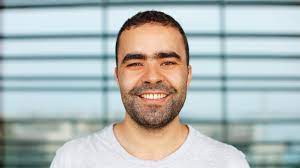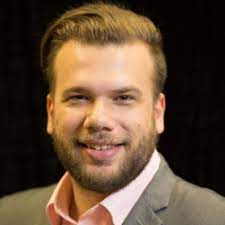PhD Student – Powering neural network based wake-up radio with radio-frequency energy harvesting
Supervision: Matthieu Gautier and Olivier Berder (IRISA), Guillaume Villemaud and Florin Hutu (CITI)
Keywords: Internet of things, Wake-up radio, Energy harvesting
Location: Shared between Lannion and Lyon (to be discussed)
Candidate skills: Signal processing and electronics are mandatory, backgrounds in digital communication, IoT, microcontroller programming are welcome
Application: Send CV, marks and motivation letter to matthieu.gautier@irisa.fr and guillaume.villemaud@ insa-lyon.fr
Context
Internet of Things (IoT) is becoming a reality. It will greatly impact our daily lives (city, housing, transportation, health, environment) and many economic sectors (agriculture, industry…). Unlicensed bands (868 MHz, 2.4 GHz) play an important role in this evolution with technologies like LoRa, SigFox or IEEE 802.15.4. However, energy consumption remains a major bottleneck, with many applications requiring the lifespan of objects to reach several years, even decades, without changing the batteries. Many efforts have been deployed to push the boundaries of energy autonomy, without however a full success.
The radio transceiver often turns out to be the most energy consuming part of a wireless node, due to both the transmitting and also receiving phases. For instance, initiating a communication requires that the source and the destination are awake at the same time. It can be difficult to plan and usually requires some highly penalizing signalling protocols. In short range multi-hop networks, ernergy consuming MAC strategies are implemented in order to synchronize the source and the destination. Low Power Wide Area Networks solved this issue by having always turned-on base stations using single hop communications and a simple ALOHA protocol, but this only works for the uplink. Wake-up receivers form an emerging technology, which allows continuous channel monitoring, while consuming orders of magnitude less power than traditional receivers. These receivers wake up a main transceiver using interrupts only when a specific signal is detected. Thus, fully asynchronous communication can be achieved, resulting in a huge decrease of energy waste. However, most wake-up receivers are still relying on low power microcontrollers that perform signal recognition but consume peak powers higher than 200 μW, making IoT nodes unable to reach their ultimate energy efficiency.
ANR U-Wake project aims to achieve a breakthrough in the field of IoT by developing a disruptive wake-up receiver solution based on (1) a bioinspired architecture achieved with an industrial CMOS technology (with transistors operating in deep sub-threshold regime) and (2) Electro Magnetic energy harvesting. The originality lies in the association of a Radio Frequency (RF) demodulator to a neuro-inspired detector and data- processing through a spiking neural network (SNN), resulting in a complete ultra-low power wake-up radio supplied with a voltage of a few 100 mV.
Objective of the PhD
The proposed receiver will be woken up when detecting a dedicated off-line learned sequence and implemented in a hardware fashion using an ultra-low power SNN. The main advantage of such a design is that it requires a few mW or less for the whole wake-up receiver. Furthermore, it can work in the 868 MHz or 2.4 GHz bands and has the ability to recognize different types of signals (on-off keying, BPSK or chirp spread spectrum modulation for instance). Requiring such a low consumption opens up the possibility to be powered using RF energy harvesting or Wireless Power Transfer, and opens the way to a wide range of application.
This PhD will focus on the energy efficiency of the proposed solution at both hardware and software levels. It will address the global node design, including RF energy harvesting unit, the integration of neuro-inspired circuits and related wake-up mechanisms, and will propose adequate power management policies.
More information here
PhD Student – Nouvelles stratégies de télé alimentation d’objets communicants et de drones en utilisant des techniques de formation de faisceau distribuée
Supervision: Guillaume Villemaud et Florin Hutu (CITI)
Keywords: radiocommunications, téléalimentation, IoT, drone, beamforming
Location: CITI laboratory, INSA Lyon, France
Application: Send CV, marks and motivation letter to florin-doru.hutu@insa-lyon.fr and guillaume.villemaud@ insa-lyon.fr
Context
Avec l’avancement des technologies semiconducteur et la réduction de la taille et du cout de fabrication des objets communicants, des conditions favorables ont été créées pour produire des capteurs communicants performants qui permettent le monitoring de différents phénomènes physiques, qui ont une autonomie accrue et qui impliquent une intervention humaine limitée voire inexistante. L’autonomie reste néanmoins un problème majeur pour ce type de capteurs, la durée de vie du réseau qui le forme lui étant étroitement liée. Plusieurs techniques ont été proposées et validées en ce sens, en partant de l’optimisation de la consommation énergétique au niveau bloc fonctionnel jusqu’à une optimisation au niveau protocole de communication. Le déploiement de tels capteurs est un enjeu majeur pour les systèmes civils et militaires et des techniques permettant la réduction de l’énergie consommée par ces objets se combinent avec des techniques de récupération d’énergie ambiante pour envisager des capteurs communicants sans source d’alimentation locale. De même la téléalimentation de micro-drones est un sujet en pleine émergence qui peut bénéficier des mêmes approches.
Objective of the PhD
Cette thèse adresse le problème de la synchronisation et de la mise en cohérence de phase des sources distribuées géographiquement. L’application envisagée est celle de la transmission de puissance sans fil en mettant en place des stratégies de type formation de faisceau distribuée. Ce projet souhaite aborder la problématique de la transmission de puissance sans fil vers un objet communicant à faible ressources énergétiques aussi bien de point de vue système de communication mais aussi du point de vue automatique ou le potentiel d’alimentation de micro-drones avec suivi de leur trajectoire. En automatique, le problème traité ici s’apparente à celui de la synchronisation d’un réseau de systèmes à retard ou bien à celui du suivi de trajectoire de référence. Les outils théoriques appliquées à ce scénario concret seront la commande de systèmes multi-agents, la commande de système à retard et l’observation de retard. Ces stratégies seront adaptées pour répondre aux contraintes matérielles des instruments de génération et d’analyse des signaux du laboratoire CITI. En effet, les « transcepteurs » vectoriels de signaux (VST) PXI-5646 de Nationals Instruments sont ciblés dans un premier temps pour ensuite passer à une échelle supérieure en utilisant la plateforme CorteXlab.
More information here




